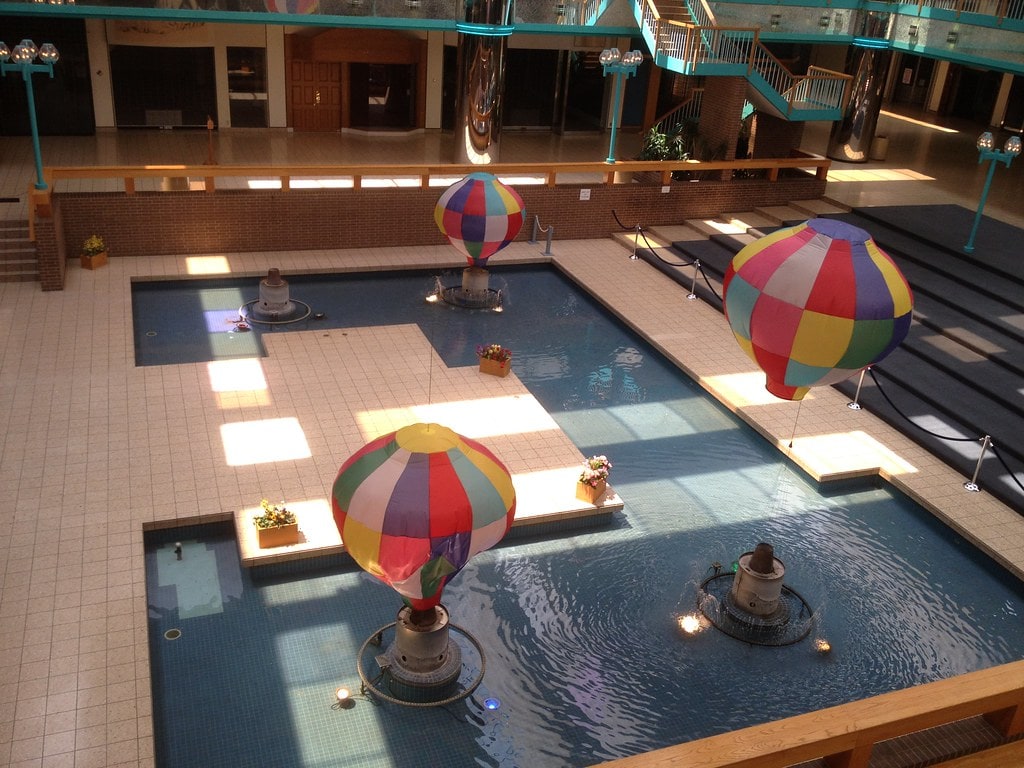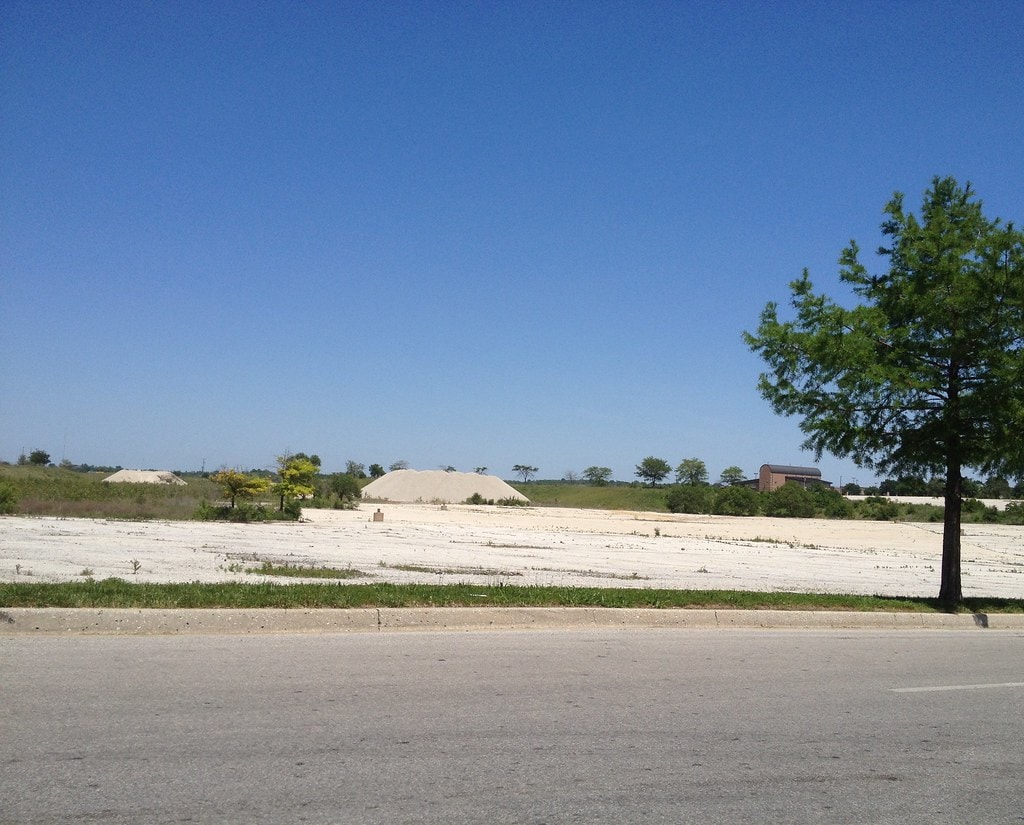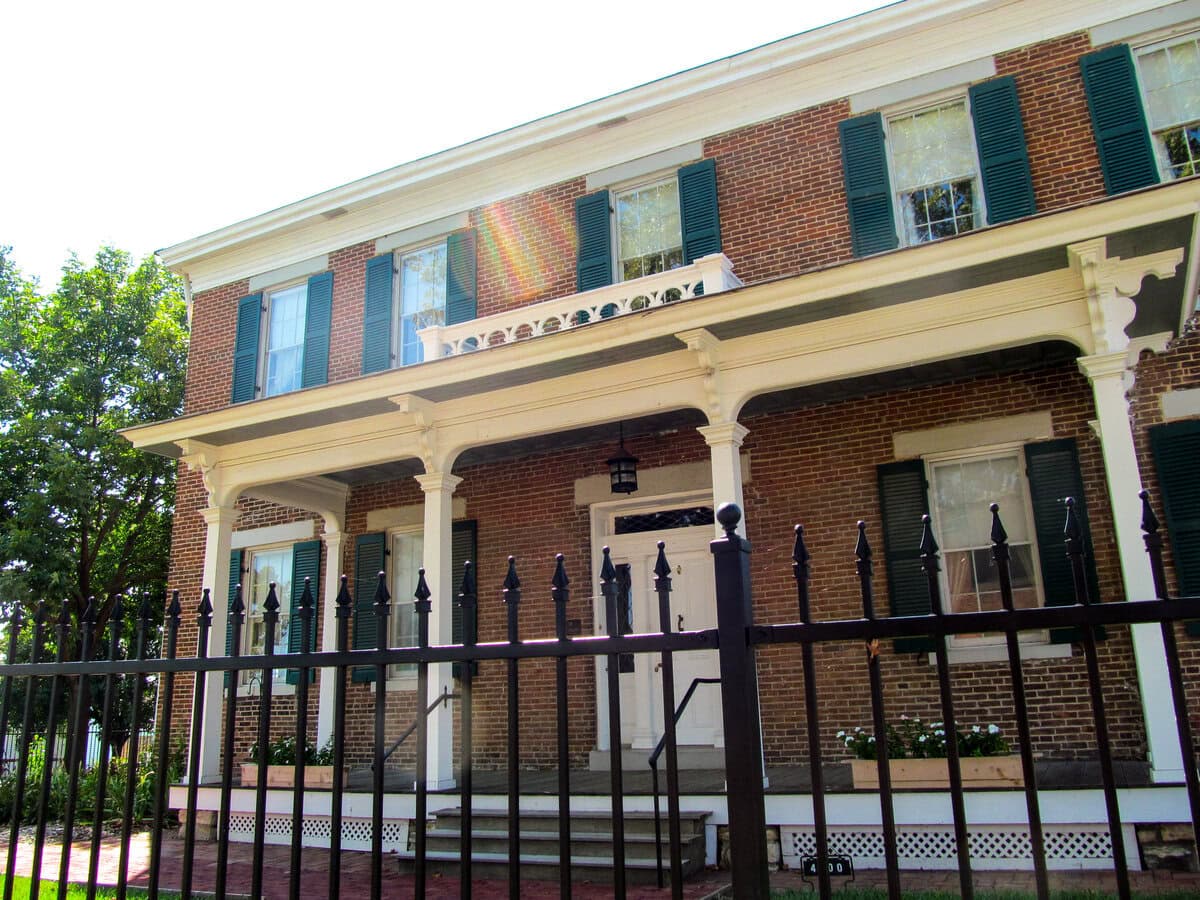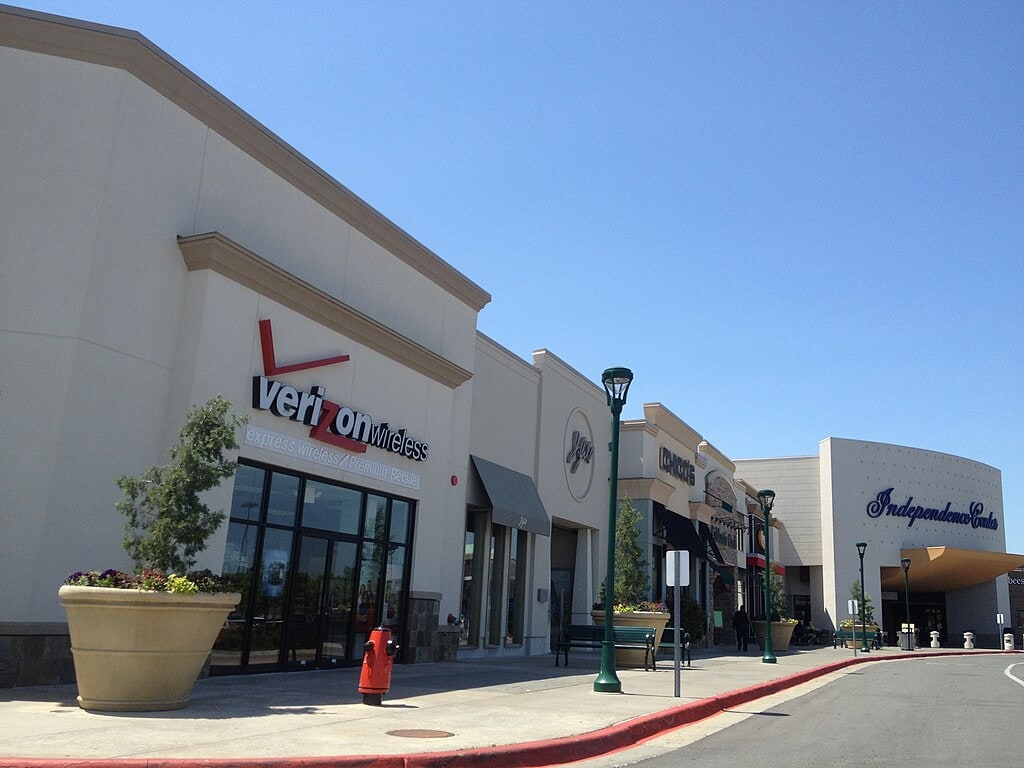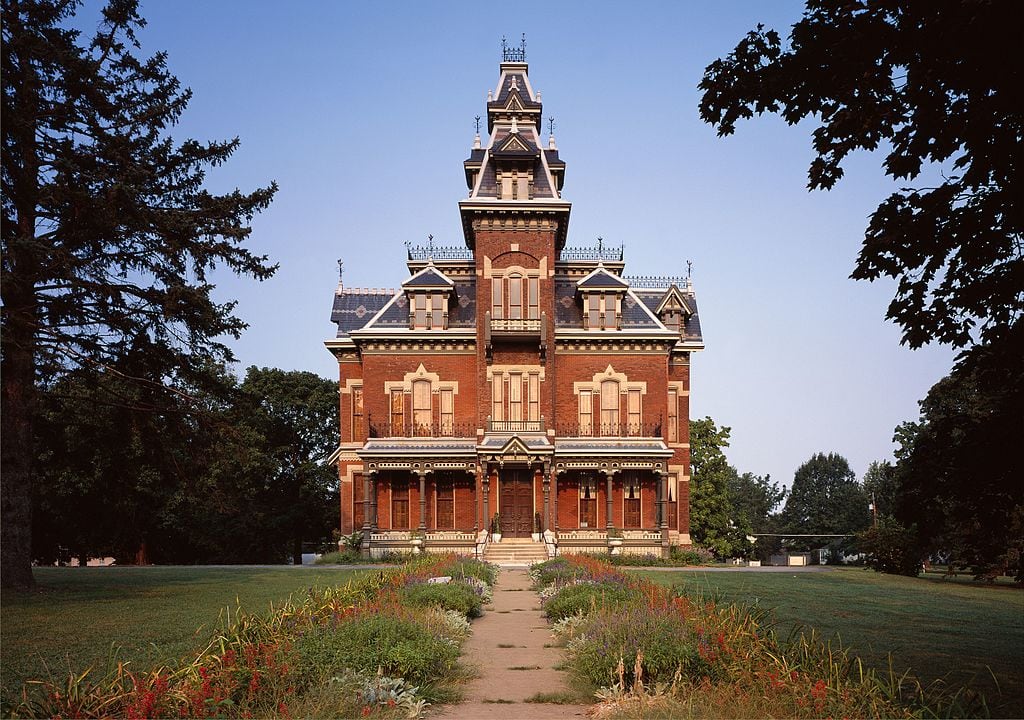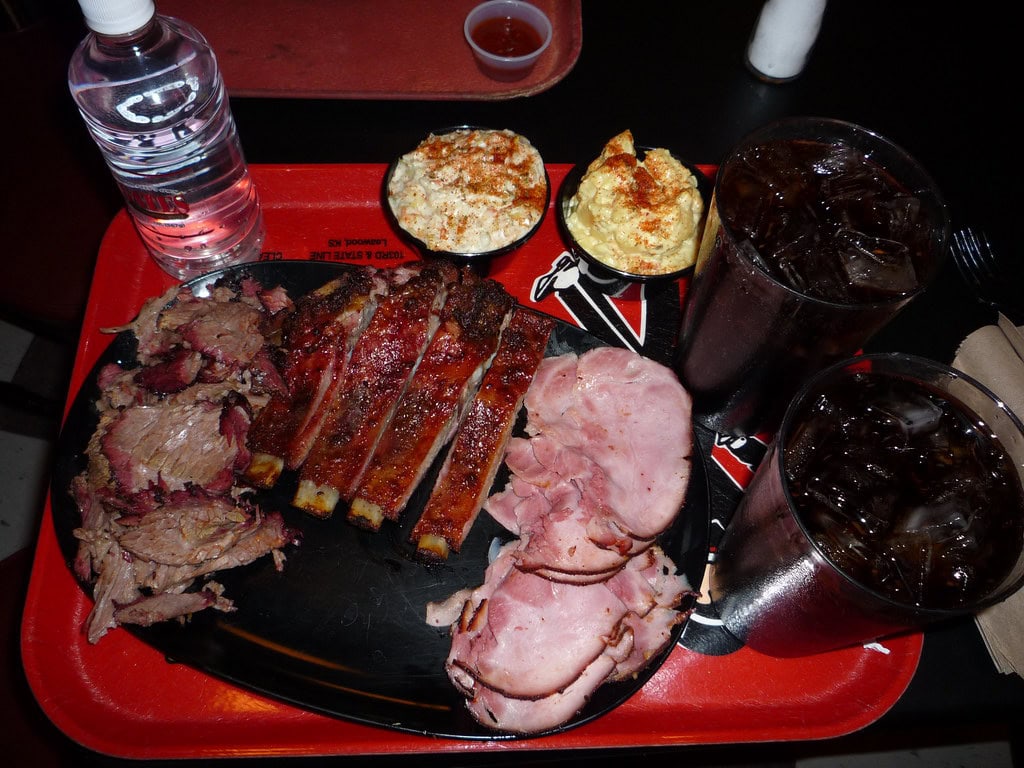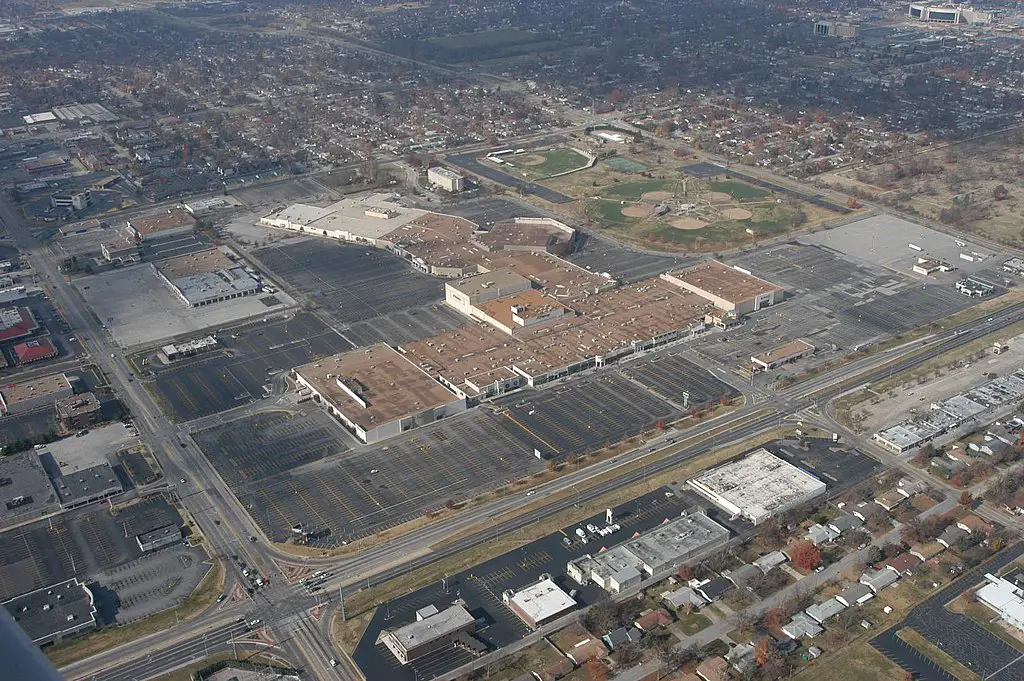Laid in Brick - 1855 and the Mansion on Westport Road
By 1855, the corner of what's now Westport Road and Main Street had started to draw traffic - not car traffic, but wagons, freight, and families on the move.
It was the sort of place where permanent construction meant something.
That year, the Harris-Kearney House was built - a two-story Greek Revival residence made of brick, not wood. That detail matters.
At a time when most houses in the area were still framed with timber, this structure marked a shift toward longer-term thinking in Westport, Missouri.
Col. John Harris and his wife Henrietta built the home.
They were already running a nearby hotel - more on that later - and the house was both a family residence and a visual marker of their success.
Locals referred to it as the Mansion House, and that name stuck for decades.
This wasn't a commercial space. It wasn't built to serve guests or handle freight.
But its location told a different story.
The building stood near the later site of Katz Drug Store, at one of the most traveled intersections in what would become Kansas City.
People didn't pass through this area without noticing the place.
The structure itself followed the lines of the Greek Revival style, which had been common in U.S. cities since the 1830s.
In Missouri, the trend lasted a little longer. Tall windows, symmetry, and a bold entrance made the building look formal - but it wasn't flashy.
By 1922, the original location had become too valuable for a residence.
Developers had other plans for the block. The Harris-Kearney House was moved to 4000 Baltimore Avenue, a few blocks south, where it still stands today.
Although its foundation may have shifted, the building remains the oldest brick residence in Kansas City.
As of 2025, it also holds a quiet place on many lists of things to do in Kansas City, Missouri - not because of what it became but because of where it started.
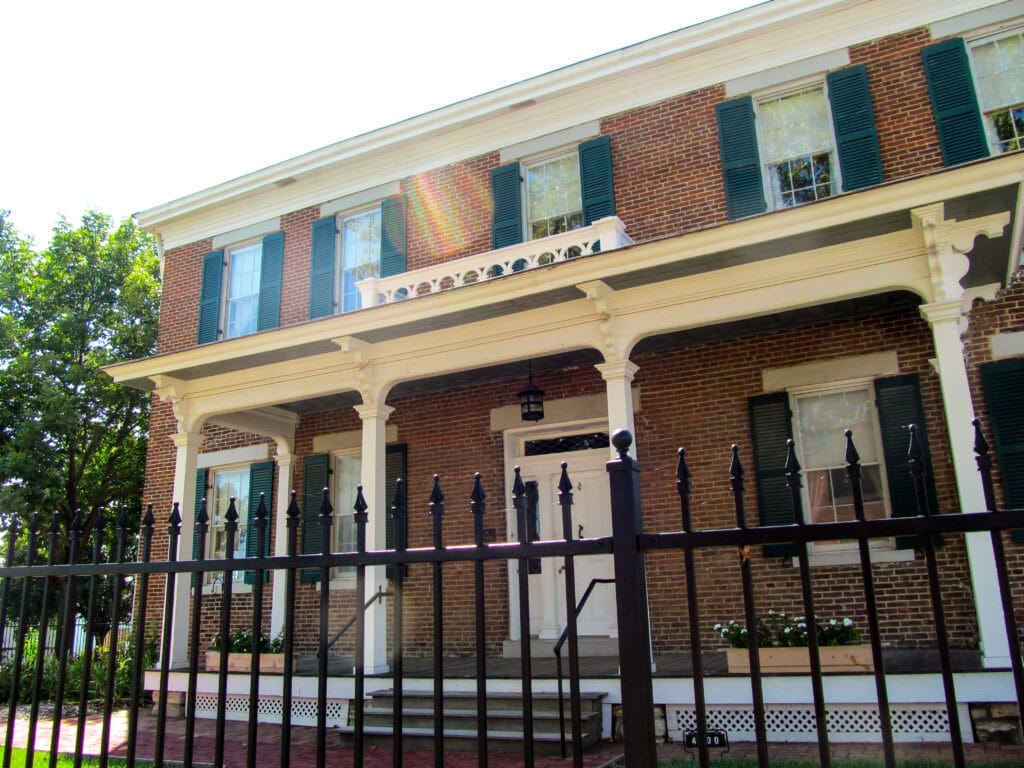
The Hotel at the Crossroads - Trade, Trails, and Troops
In 1846, nearly a decade before the Mansion House was built, the Harris family stepped into the hospitality trade.
They bought the Catfish House, a small hotel and saloon at the northeast corner of Westport Road and Pennsylvania Avenue.
That structure didn't last long. A fire in 1848 destroyed it, but the setback didn't stop them.
With help from neighbors and funds scraped together locally, they rebuilt on the same corner.
This time, it was brick - and three stories tall.
The new place got a new name: the Harris House Hotel.
It wasn't fancy, but it was dependable, and it filled a gap.
Westport sat at a critical point on the Santa Fe, Oregon, and California Trails.
Travelers needed rest, meals, and directions. The hotel handled all three.
By the 1850s, traffic through Westport grew. Traders with wagons, military supply teams, prospectors chasing gold - they all stopped here.
The hotel saw all of it. It fed salesmen headed west and sheltered soldiers when things heated up.
In October 1864, during the Battle of Westport, Union forces moved in and took over the property.
General Samuel Curtis used the Harris House Hotel as his command post.
That same building - originally intended to house trappers and traders - briefly became a wartime headquarters.
Inherited Walls - Transitions, Additions, and Ownership Deals
By 1855, the Harris family had moved into their brick home.
They stayed there for 26 years. But by 1870, another family was making changes to the same house.
The Kearneys moved in that year, bringing five children - three biological daughters, one adopted daughter and a son.
They didn't leave things as they were. To make room, the back of the Harris-Kearney House was expanded.
The Kearneys lived there until 1898. During that stretch, Westport's identity began shifting from a trail hub to a city neighborhood.
Freight roads turned into planned streets. That era of expansion brought attention - and, with it, buyers.
In 1898, William Rockhill Nelson, the man behind The Kansas City Star, bought the property.
He didn't hold it for long. As a wedding gift, Nelson gave the Harris-Kearney House to Mr. and Mrs. Thomas W. Johnston.
Johnston edited the Star at the time. The building passed quietly from one part of Kansas City's media history to another.
Then came a turn. In 1921, Elmer Williams, a businessman with plans for hotel construction, bought the home.
He aimed to demolish the Harris-Kearney House and build something more profitable on the land.
But word of the plan spread, and a group of women - early members of what would become the Daughters of Old Westport - stepped in.
They raised $1,000 to buy the Harris-Kearney House from Williams in 1922 and then another $5,000 to move it.
The building couldn't stay at its original site, so by the end of that year, it was at 4000 Baltimore Avenue.
The west-facing portico didn't survive the move. It had to be removed for transport and was never rebuilt.
But the rest of the structure - brick, beams, and old additions - came along intact.
Preservation, Loss, and Office Space
On December 31, 1922, the Harris-Kearney House reopened to the public as a museum.
The museum didn't last. Interest faded, funding dried up, and by the early 1930s, the Harris-Kearney House sat idle again.
In 1940, it went up for public auction. A commercial buyer stepped in.
Over the next few decades, the property cycled through uses: medical offices, dental clinics, and small business leases.
The interior was divided, rewired, and retrofitted to suit tenants.
None of those setups proved steady. Renters came and went. By 1970, the Small Business Administration had taken control.
The Harris-Kearney House, still standing but worn down, looked like it might have fallen through the cracks of real estate history.
Through all of this, the structure held on - the original brick and the added back wing.
The building was older than nearly everything around it, but it had no permanent role.
It was useful space, and then it wasn't. Then it was again - for a while.
Registry, Grants, and the Museum Reopened
Two years after federal oversight began, the building reached a turning point.
On October 18, 1972, the Harris-Kearney House was added to the National Register of Historic Places.
That listing gave it visibility - and, with it, options.
Preservation didn't mean full repair, but it did shift the tone.
In 1976, the Westport Historical Society bought the Harris-Kearney House.
The group's goal wasn't commercial - they wanted to return the structure to its mid-19th-century layout.
In 1979, they secured a $10,000 grant. Most of that money went to restoring the exterior.
Trim, window frames, porch work - everything aimed to match the house's appearance in the 1850s.
The interior also received attention. Furniture and household pieces came from descendants of the Harris and Kearney families.
Some pieces stayed local, while others were tracked down and returned.
Bedding, tools, and decorative items were arranged to reflect daily life from the time the house was built.
In 1985, the house reopened as the 1855 Harris-Kearney House Museum.
This time, it stayed open. Tours began that same year, and events followed.
The building was added to wedding schedules, private tours, and historical programs.
It operated as a 501(c)(3), which helped maintain operations.
The museum is active again as of spring 2025. After closing for 18 months of renovations, it reopened in July 2024.
At the Harris-Kearney House, there is a room focused on Harriet "Hattie" Drisdom Kearney.
She was purchased as a child by Col. Charles Kearney and later freed, staying on as a housekeeper.
She became the first African American buried in the Kearney family plot at Union Cemetery.
The room offers context about her life and connection to the household, an addition that expands the museum's presentation of its history.
Other changes include a new art exhibit. Local painter R. Greg Summers contributed scenes of historic Westport, with wagons and early streetscapes.
Outside, pieces of an 1838 Conestoga wagon - once shown at the Westport Shopping Center - now rest on the museum lawn.
Along the fence, 150 "pioneer daylilies" donated by Sallie Capen were planted ahead of the July 2024 reopening.
Now, from March through mid-December, Harris-Kearney House offers guided tours Fridays through Sundays, plus extra dates by appointment.
Staff from the Westport Historical Society keep things running, handle bookings, and update displays when needed.
The building no longer shifts functions year to year. It's a static exhibit now - but one that still draws interest.
After Hours - Paranormal Curiosity at the Harris-Kearney House
As Kansas City's oldest brick home, Harris-Kearney House has become a stop for people drawn to ghost stories and unexplained moments.
In October 2024, the site hosted evening events that tapped into that curiosity. Guests signed up for walking tours and short investigations.
Some stayed for five-hour overnight sessions. The times were split - family-friendly on some nights and adults-only on others.
Over the years, accounts have included mannequins that appear to shift positions, pianos that play without touch, glowing orbs on the staircase, and pale mist moving through rooms.
One recurring claim involves a figure in 19th-century clothing seen near windows or along the hall.
The events aren't framed as entertainment alone.
Staff at the house use them to connect people to documented history.
The structure carries stories tied to migration, battles, and changing city lines.
For some visitors, the late-night format adds a layer that daytime tours don't reach.
This combination - local history with a side of speculation - continues to draw attention, especially around Halloween.
The house stands, as always, in the same spot on Baltimore Avenue.
But during those nights, the focus shifts from the past you can read to the parts people say they've felt.

